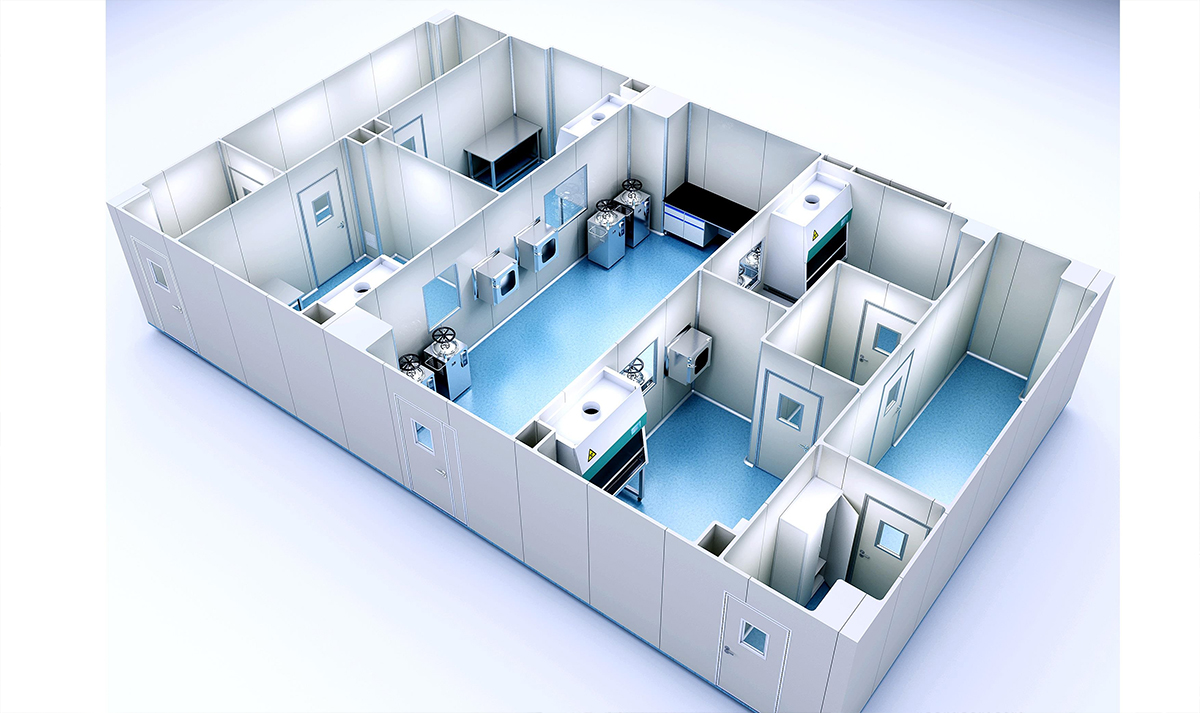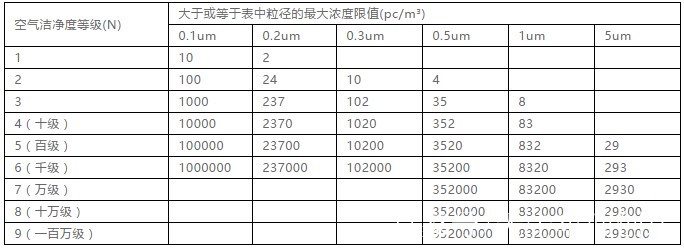Cleanroom Grade Standards and Specifications in Various Countries
Standards and specifications for cleanroom grades in economically and technologically developed regions

Modern cleanroom facility for high-precision manufacturing
Cleanroom grade standards and specifications have their own standards in economically and technologically developed countries and regions, and all specify the relevant cleanliness grades. For example: the United States, Japan, Western Europe, Northern Europe, Russia, etc.
China promulgated the "Cleanroom design Specifications" (GBJ73-84) in 1984, and the specification was greatly revised in 1996. In 1990, the "Cleanroom Construction and Acceptance Specifications" (JGJ71-90) was promulgated as an important document to guide construction and acceptance. At present, the specification is being revised.
GBJ73-84 Cleanliness Grades
| Level | Number of dust particles >0.5μm per cubic meter (liter) of air | Number of dust particles >5μm per cubic meter (liter) of air |
|---|---|---|
| 100 | <35*100((3.5) | <1 |
| 1000 | <35*1000((35) | <250 ((0.25) |
| 10000 | <35*10000((350) | <2500 ((2.5) |
| 100000 | <35*100000((3500) | <25000 (〈25) |

China's Cleanroom standards
The GBJ73-84 standards have been crucial for guiding cleanroom design and construction in China since 1984, with revisions to keep up with technological advancements.
US Federal Standard fs209e Cleanliness Levels
| Level Name | 0.1μm | 0.2μm | 0.3μm | 0.5μm | 5μm | |||||
|---|---|---|---|---|---|---|---|---|---|---|
| International units | Imperial Units | International units | Imperial Units | International units | Imperial Units | International units | Imperial Units | International units | Imperial Units | |
| M1.0 | 1 | 350 | 0.35 | 9.91 | 0.1 | 2.83 | 0.035 | 1 | 0.001 | 0.0283 |
| M1.5 | 10 | 350 | 2.65 | 75.7 | 0.757 | 21.4 | 0.214 | 6.0 | 0.0035 | 0.1 |
| M2.0 | 10 | 3500 | 26.5 | 757 | 7.57 | 214 | 2.14 | 60 | 0.035 | 1 |
| M7.0 | 1000000 | 35300000 | 265000 | 7500000 | 75700 | 2140000 | 21400 | 600000 | 2930 | 83200 |
NASA Standard NHB5340.2
| Particle | Bioparticles | Pressure | Temperature | Humidity | Airflow | Illuminance | ||
|---|---|---|---|---|---|---|---|---|
| diameter(μm) | (pieces/L) | Floating volume (pieces/L) | Floating volume (pieces/m2 per week) | mmH2O | ℃ | % | Ventilation frequency | LX |
| ≥0.5 | ≤3.5 | ≤0.0035 | 12900 | ≥1.25 | Specified number | 40-45 | Specified number | 1000-1620 |
| 100 | ||||||||
| ≥0.5 | ≥350 | ≤0.0176 | 64600 | ≥1.25 | Specified number | 40-45 | Specified number | 1000-1620 |
| ≥5.0 | 10000 | |||||||
| ≥0.5 | ≥3500 | ≤0.0884 | 323000 | ≥1.25 | Specified number | 40-45 | Specified number | 1000-1620 |
| ≥5.0 | 1000000 | |||||||
NASA CleanRoom Standards
NASA's NHB5340.2 standard sets strict requirements for cleanrooms used in space technology, ensuring minimal contamination for critical missions.
Japanese Industrial Standard JISB-9920-1989
Japanese industrial cleanroom standards focus on precision and consistency for manufacturing excellence.
Comprehensive Grading: JISB-9920-1989 defines multiple cleanliness levels for different industrial applications.
Particle Control: Strict control over particle counts at various size thresholds.
Environmental Factors: Consideration of temperature, humidity, and airflow for optimal Cleanroom performance.
Industrial Relevance: Standards tailored to meet the specific needs of Japanese industries.
Summary of Cleanroom Standards Worldwide
Cleanroom standards around the world reflect the technological advancements and industrial needs of each region. While there are differences in grading systems and specific requirements, the common goal is to maintain controlled environments with minimal contamination for high-precision manufacturing and scientific research.
Understanding these standards is crucial for industries ranging from Semiconductor manufacturing to pharmaceutical production, ensuring product quality and process reliability in cleanroom environments.
 +86 18186671616
+86 18186671616 Jason@cleanroomequips.com
Jason@cleanroomequips.com
 MENU
MENU



